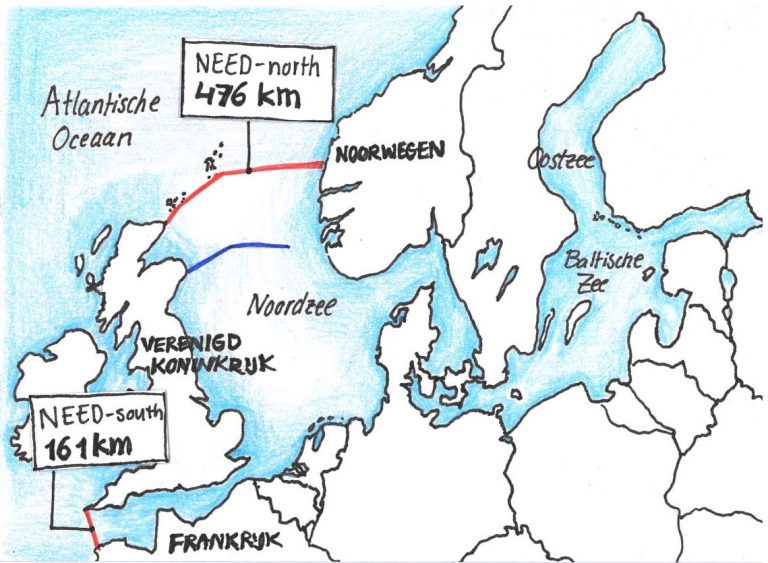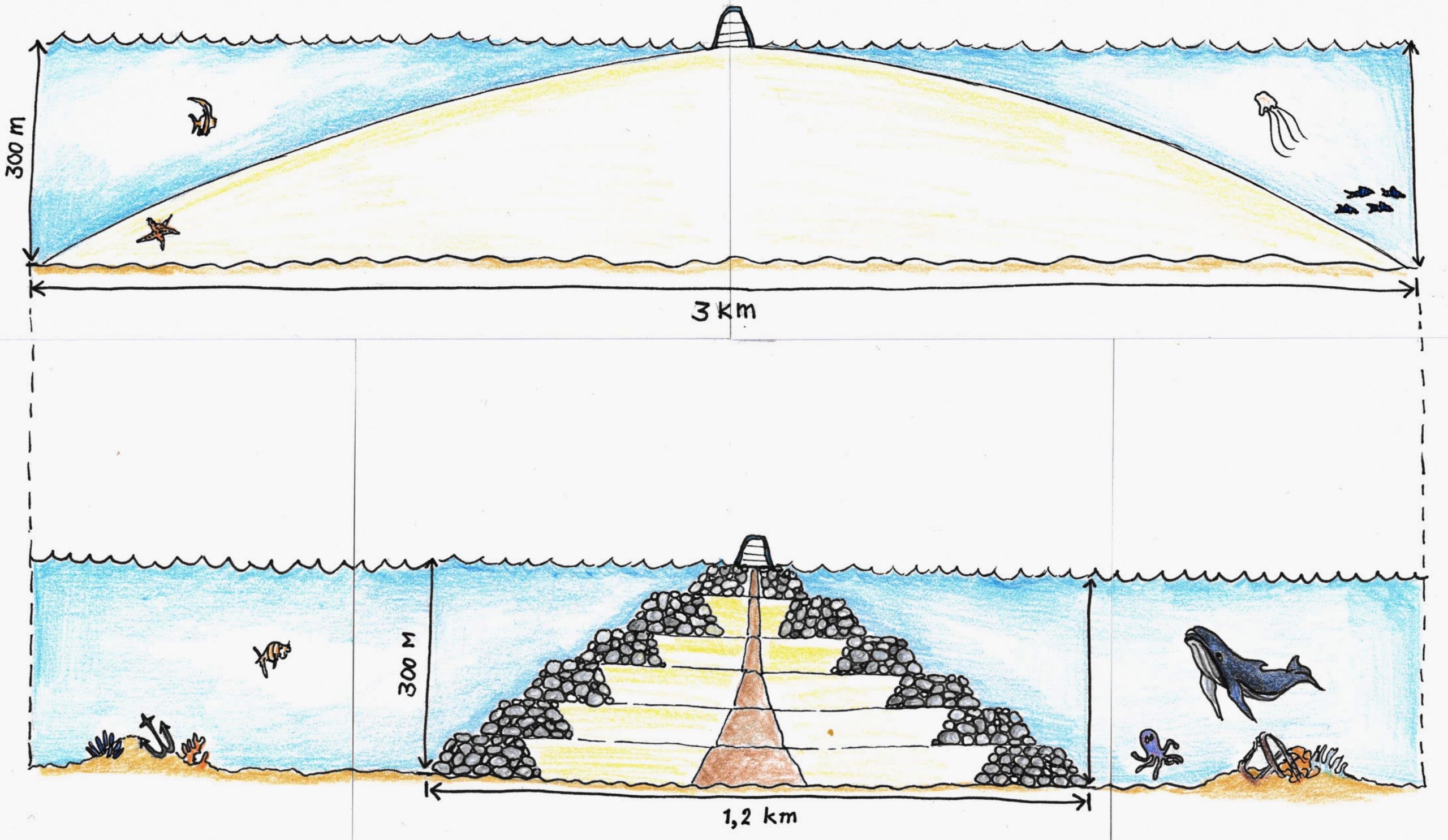The North Sea could be closed off from the Atlantic Ocean by two long dams. This may stop the sea level rise around the new ‘North Lake’. A stroke of genius or a delusion?
The Dutch Afsluitdijk used to be the world's longest dam. (Foto:Gabriele Giuseppini, Wikicommons)
One dam could run between Brittany in France and Penzance in south west England (161 km). The other could connect north east Scotland via the Orkney Islands to Bergen in Norway (476 km). Johan van Veen, the man who came up with the idea of the Delta Works, had reportedly written about this. The idea for a Northern European Enclosure Dam (NEED) is once again a subject of interest after a publication by Sjoerd Groeskamp, physical oceanographer at the Koninklijk Nederlands Instituut voor Onderzoek der Zee (NIOZ, Royal Netherlands Institute for Sea Research) issued by the American Meteorological Society.
 Illustration: Sija van den Beukel
Illustration: Sija van den BeukelFor about EUR 500 billion, the dams could protect 25 million people in 14 countries that live up to two metres above sea level for the next few centuries. Daring, controversial, visionary with a touch of the megalomania, it could be a TU Delft idea. But it is not. What do people at TU Delft think of it?
Reducing the peaks
“I’ve been saying this for a while,” says Professor Wim Uijttewaal of Hydraulic Engineering, “only, I would do it a little less drastically.” Uijttewaal knows that the dimensions of Dutch dikes are calculated to survive the worst case scenarios – spring tides, impoundment and maximum wave runup. If you could reduce the water level peaks, there is still space for a couple of metres of sea level rise, he reasons, and this allows you to buy time.
An open dam running from Scotland to Norway could stop the tide (1.5 metres) and the storm surge (3.5 metres) by perhaps more than a metre without needing to completely close the North Sea. Uijttewaal believes that this would reduce the peaking waves’ impact on the Dutch coast. He would rather have an open breakwater than the closed NEED design.
He also believes that it would be better if the northern dam ran further south because of the shallower depths. For example, between Peterhead (Scotland) and Stavanger (Norway).
Should the sea level rise at the end of this century be faster than expected, the breakwater could still be closed towards Norway. The deep Norwegian trough (300 meter) makes it the most difficult and expensive part of building the dam.
A lot of sand
“Boskalis and Van Oord think this is a wonderful plan,” says Dr Bas Hofland of Hydraulic Structures at the Faculty of CEG. Building a dam means sand injection. A huge amount of sand from further out at sea. A gradient of 1:5 needs a sand dam of three kilometres wide and 300 metres high capped with a concrete breakwater.
 Illustration: Sija van den Beukel
Illustration: Sija van den BeukelStones would make the slope steeper so that the base need ‘only’ be 1.2 kilometres wide. The interior wall of the dike would then be made of sand and clay. The stones would come from a Norwegian fjord where a ship would collect a blown up mountain wall in its hold. Hydraulic engineers start salivating just by thinking about this.
Solidarity in Europe
“A wonderful delusion,” Prof. Peter Herman calls the NEED design. The Professor of Ecological Hydraulic Engineering enjoys the Dutch-centric idea. Twenty-five million people are at risk, of which half are in the Netherlands. And now Europe is to share the costs of a EUR 1,000 billion rescue plan. The budget quotes EUR 250-500 billion, but you know how it is with mega projects … “I believe that the Greeks would be pleased to do this if they think back to how we helped them,” jokes Herman.
But for marine life in the North Sea, the North Sea dam is nothing less than a catastrophe. The 30,000 cubic metres of fresh water that flow into the North Sea every second will turn the sea into a fresh water lake. At least at the surface. Deep troughs would remain salty but would have no more oxygen because there would be no more tides.
Furthermore, asks Herman, will a dike of this size really protect you if the water rises by five or 10 metres? And on top of that, you must hope that there will never be a war again. “Just one hole in the dike would put all of north west Europe out of action. Just one bomb would be all it takes.”
Herman finds the NEED plan entertaining, but believes that researchers and graduates would be better off spending their talents and time on adaptation measures targeted at the next 20 to 30 years and on climate policy.
- Attachment: Sjoerd Groeskamp, Joakim Kjellsson, NEED Northern European Enclosure Dam for if climate mitigation fails, American Meteorological Society, 2020.
Do you have a question or comment about this article?
j.w.wassink@tudelft.nl


Comments are closed.